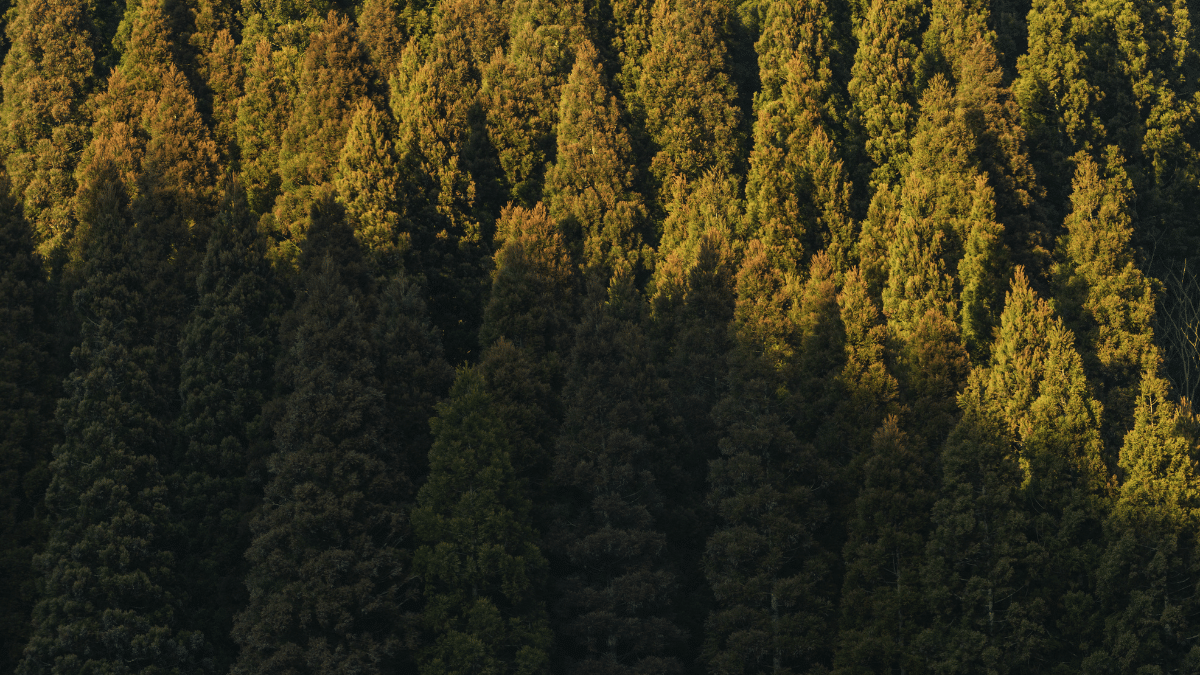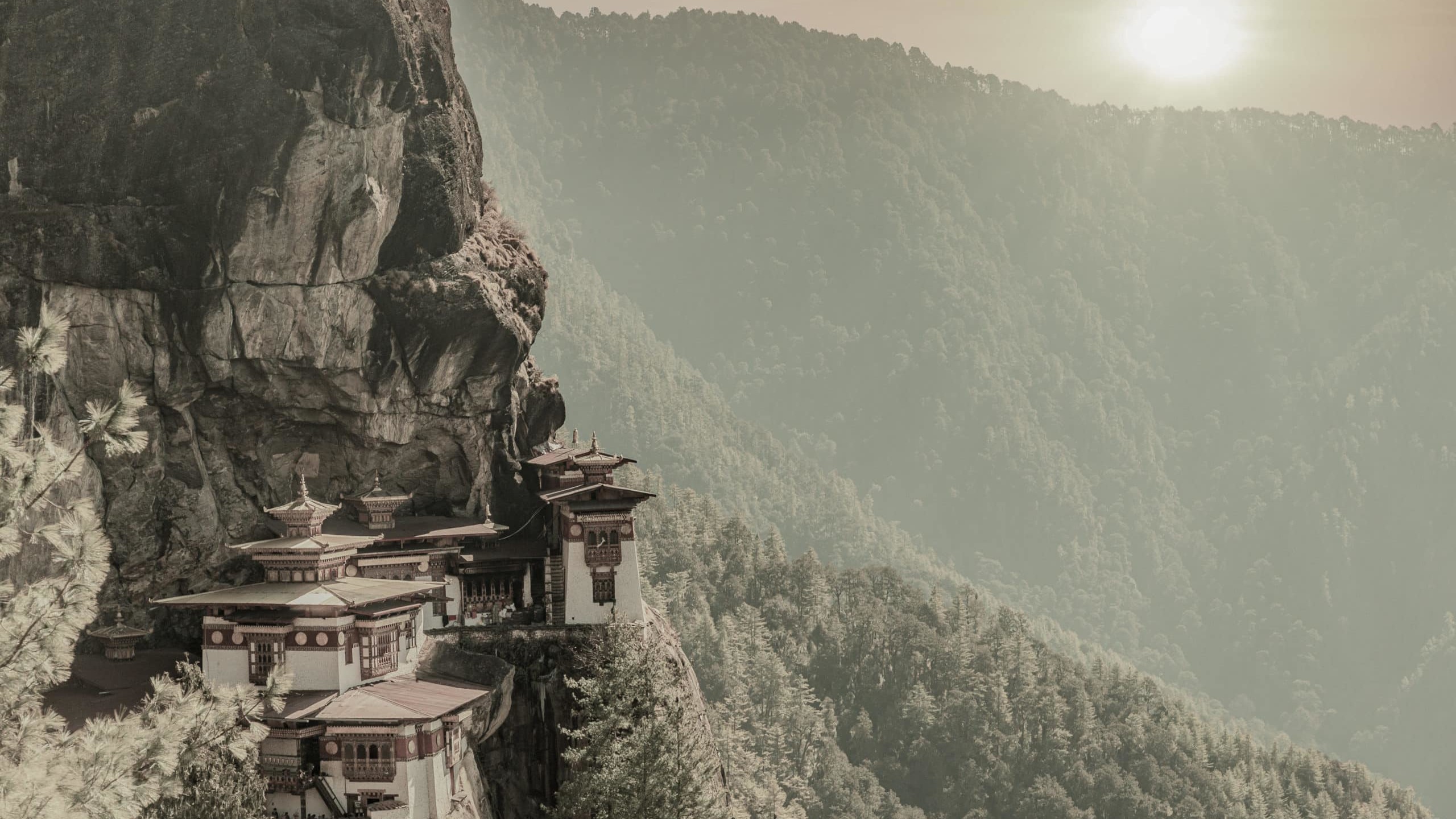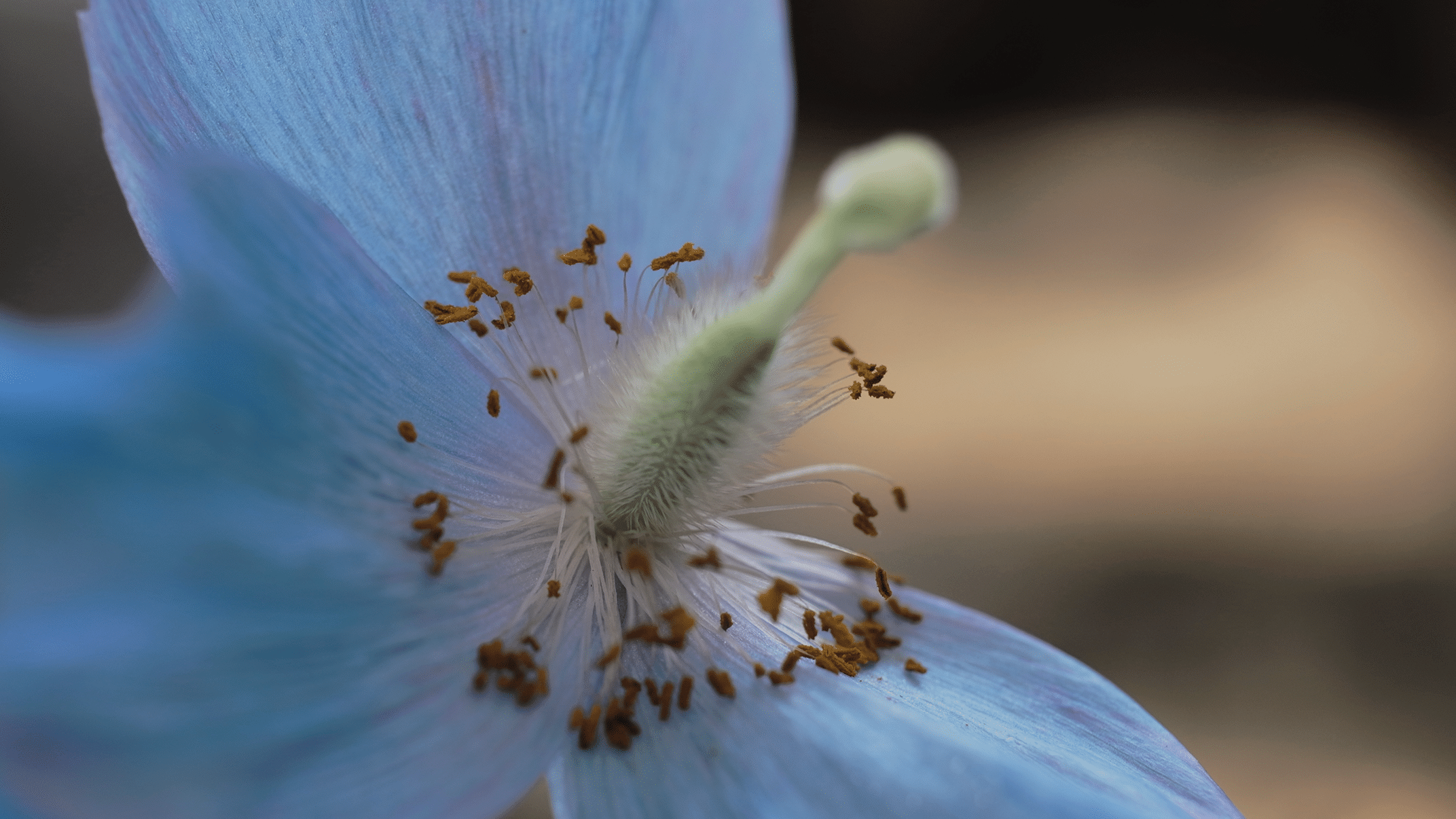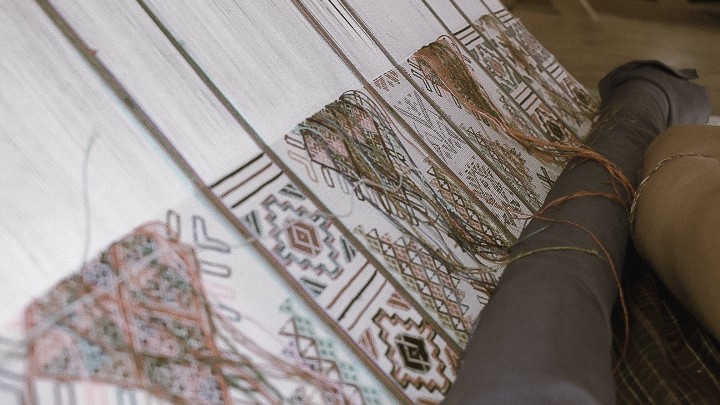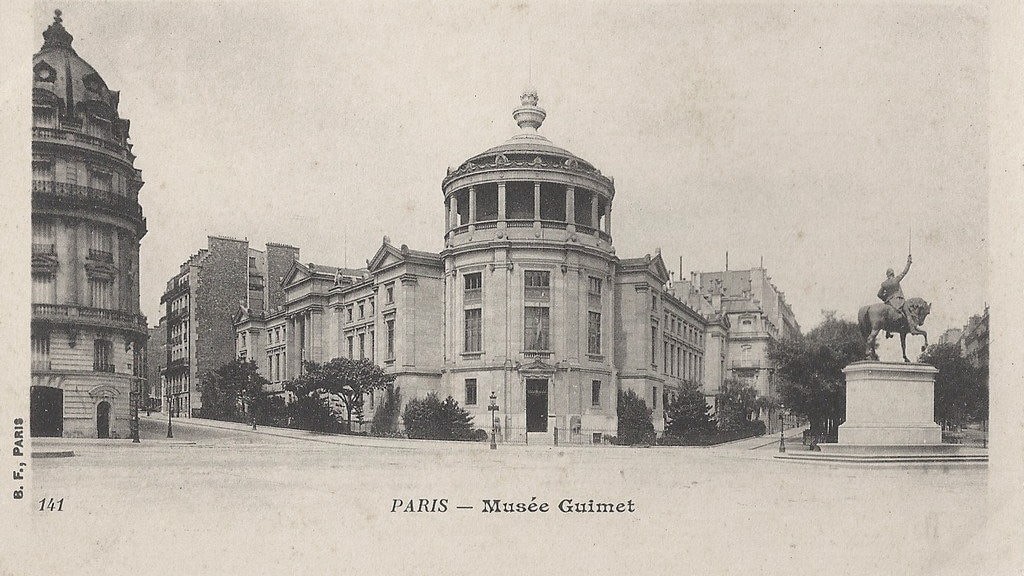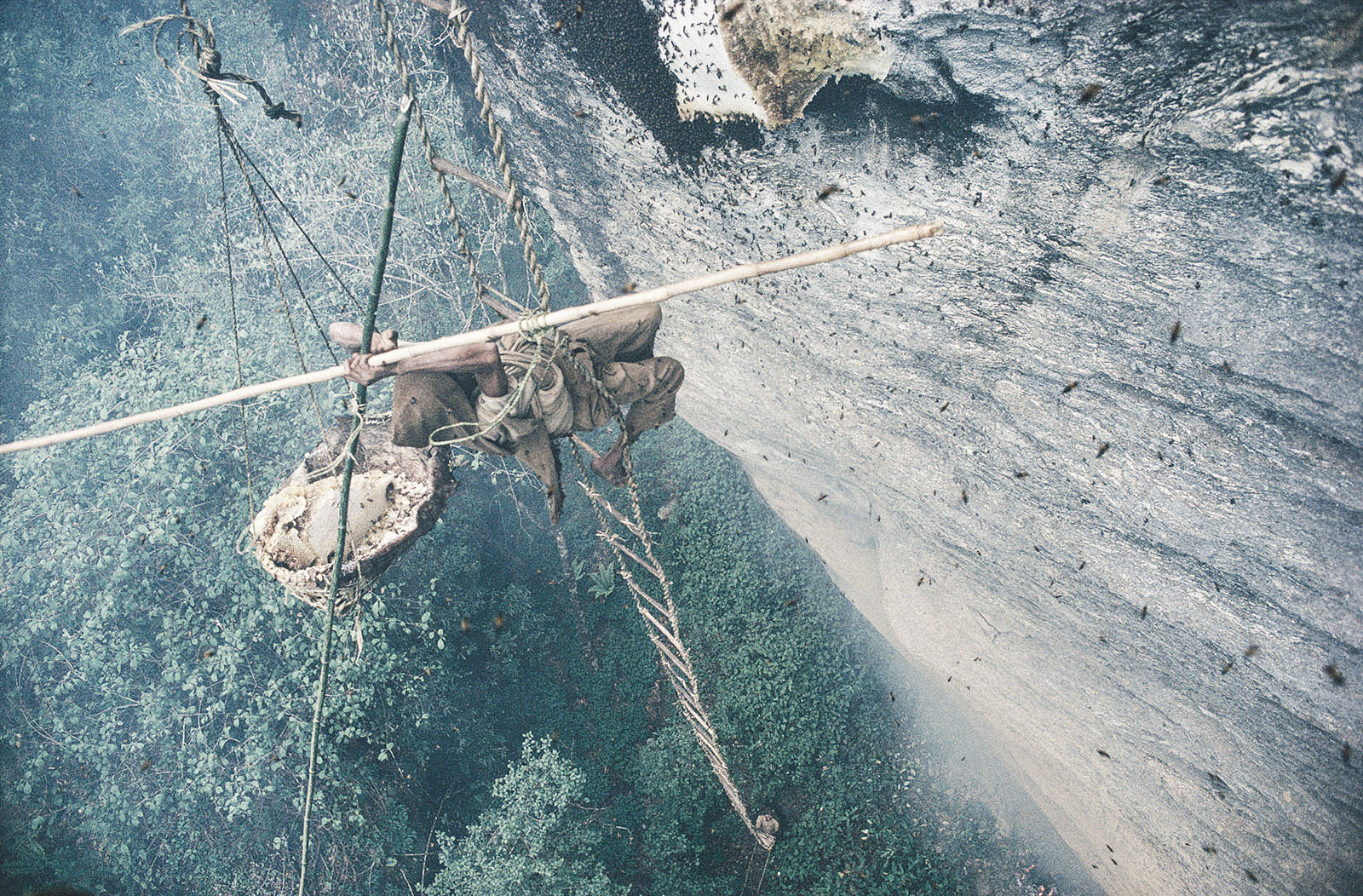
In the misty foothills of the Himalayas, honey hunters risk their lives harvesting wild honey from vertical cliffs as their ancestors have done for centuries. This wild honey is known for its amber color and slightly bitter taste. Also known as ‘mad honey’, it is highly prized for medicinal properties believed to relieve hypertension, provide a burst of energy, or work as a sweet substitute for Viagra. Consuming this honey can cause reactions ranging from a slowed heartbeat and hallucinations to temporary paralysis and unconsciousness. Risk not only lies in consuming this honey, but also in harvesting it.
The harvest takes place twice a year in tandem with spring and autumn festivals. The practice is tightly interwoven with Himalayan culture and beliefs. The honey hunters of Nepal must first perform a ceremony for the cliff gods to pray for safety and forgiveness from the bees. A ceremony commonly involves offerings of fruit, flowers, rice, and sheep.
The hunt begins as hand-spun rope ladders are flung down upon sheer cliffs from above, enabling barefoot hunters to reach the precariously perched hives of Apis Laboriosa, the world’s largest honey bee. Smoke is used to disorient thousands of irate bees that must be coaxed to leave their nests. The smoke helps, but there is no way for a hunter to escape the inevitability of being stung.
Blood, bites, and blisters are synonymous with the hunt. Honey hunters muster the courage to invade the hives with a sharp bamboo implement called a ‘tango’ in one hand and the rope ladder in the other. Untethered and suspended at dizzying heights, the lives of these honey hunters depend on their ability to contend with swarming bees while cutting away blocks of precious honeycomb and lowering them to the ground in delicate woven baskets.
Once the honey is harvested, the hunters thank the bees and pray that the colony flourishes so that the practice may continue for generations to come. Much of the honey is destined to travel to Kathmandu, where it is sold to customers around the globe. But some of the bounty is divided and shared by those who have gone to unfathomable heights to harvest it.
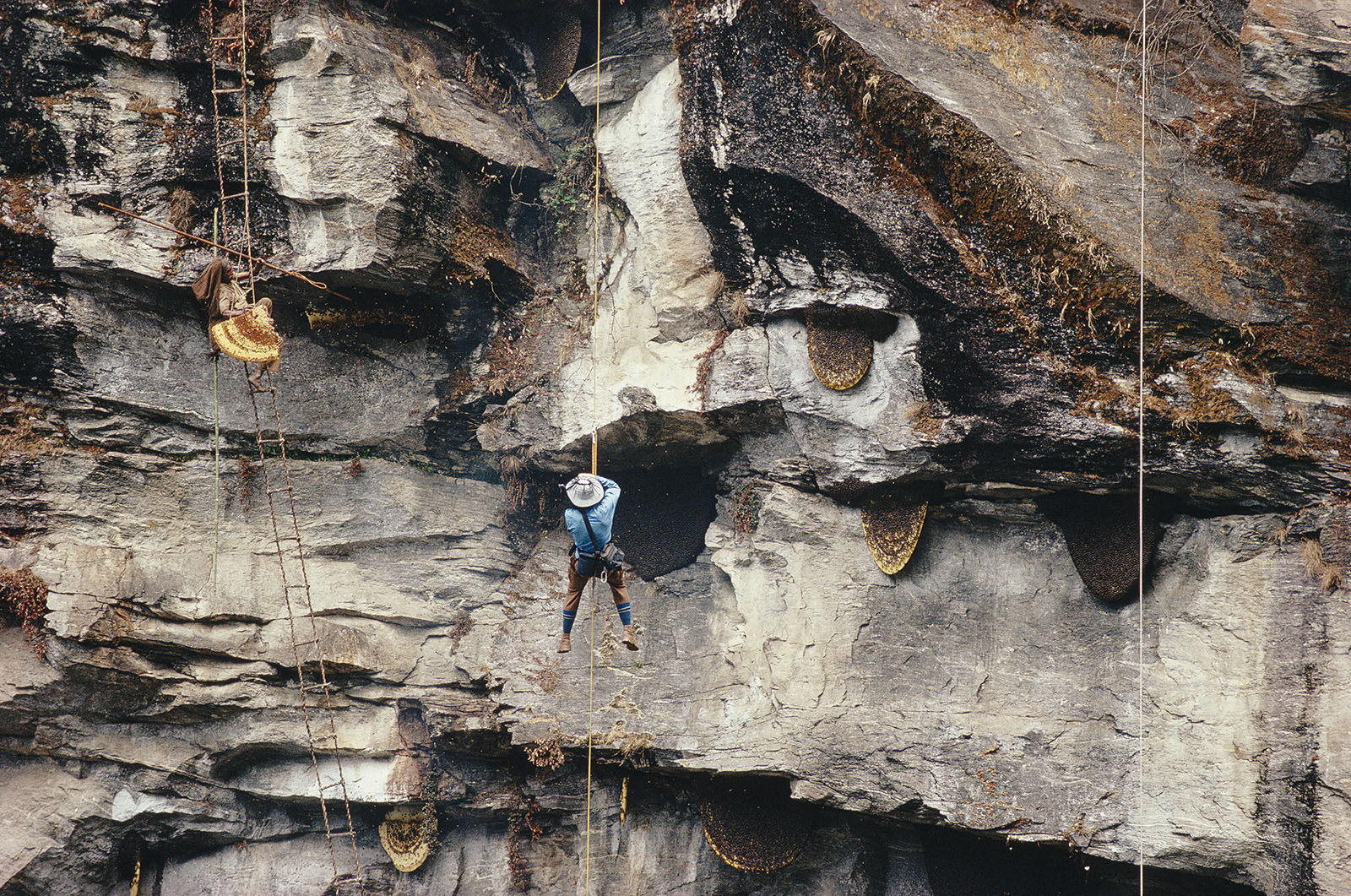
With the demand for wild honey growing, harvesting honey has become a steady source of income for the honey hunters, but recent reports show that this once-plentiful nectar is dwindling just as fast. Ratna Thapa, senior bee scientist at Tribhuvan University in Kathmandu, says, “Every year there is a 70% decline in the Himalayan cliff honeybee population.” The rapidly declining bee population poses an immediate threat to the honey hunters and their traditional way of life.
Stories of the honey hunters of Nepal and their plight have spread across the globe. In 2013, documentary travel photographer Andrew Newey spent two weeks living with the Gurung people of central Nepal in a remote region untouched by tourism to document a three-day autumn hunt. In 2018, National Geographic produced a short documentary film called The Last Honey Hunter in partnership with a local organization called the dZi Foundation. The film’s gravity-defying scenes take viewers on a hunt with Kulung culture in Nepal’s Hongu river valley. Powerful stories such as these offer a rare window and emotional connection to an ancient Himalayan tradition on the brink of extinction.
Photography by Eric Valli
Words by Trixie Pacis – Commissioned by hima jomo
The Life and Legacy of Alexandra David-Néel
In 1924, Alexandra David-Néel made history as one of the first Western women to secretly enter Tibet. Disguised as a beggar, she crossed into Lhasa, bringing the mysteries of Tibetan Buddhism to the West.
Earth Day – Our Environmental Initiatives
Since 2023, HIMA JOMO has been steadfast in our pledge to plant a tree in the Himalayas for every perfume purchase made, join us in building a lush forest in the heart of the Himalayas with Nepal Evergreen.
The Travelling Jacket
In 2016, five designers from across South Asia came together to create what is now known as the traveling jacket.
The Himalayan Cedar
This majestic tree has captivated the hearts of explorers, poets, and nature enthusiasts for centuries with its enchanting presence, aromatic fragrance, and enduring qualities that make it a symbol of strength and grace.
Earth Day with a Himalayan Kingdom
Earth Day, a cherished moment that comes each year on April twenty-second, is a worldwide communion of hearts, minds, and hands, united in a shared reverence for our planet's splendour.
The blue poppy of the Himalayas
A flower that lives in the seclusion of the nature that surrounds her. Simply known as blue poppy but its colour speaks silent poetry.
Khoma, the Sound of Weaving
A collective thumping sound echoes in the village of Khoma with the wake-up call from their local roasters.
Discover Ladakh: The Land of High Passes
India is known globally for its vibrant and bustling megacities but in its northern reaches lie the mountains and valleys of Ladakh, a name that means land of high passes.
Five Millenia of Asian Art at Paris’ Musée Guimet
Works of art that have survived the test of time offer us clues about the history and culture of past generations and civilisations.







